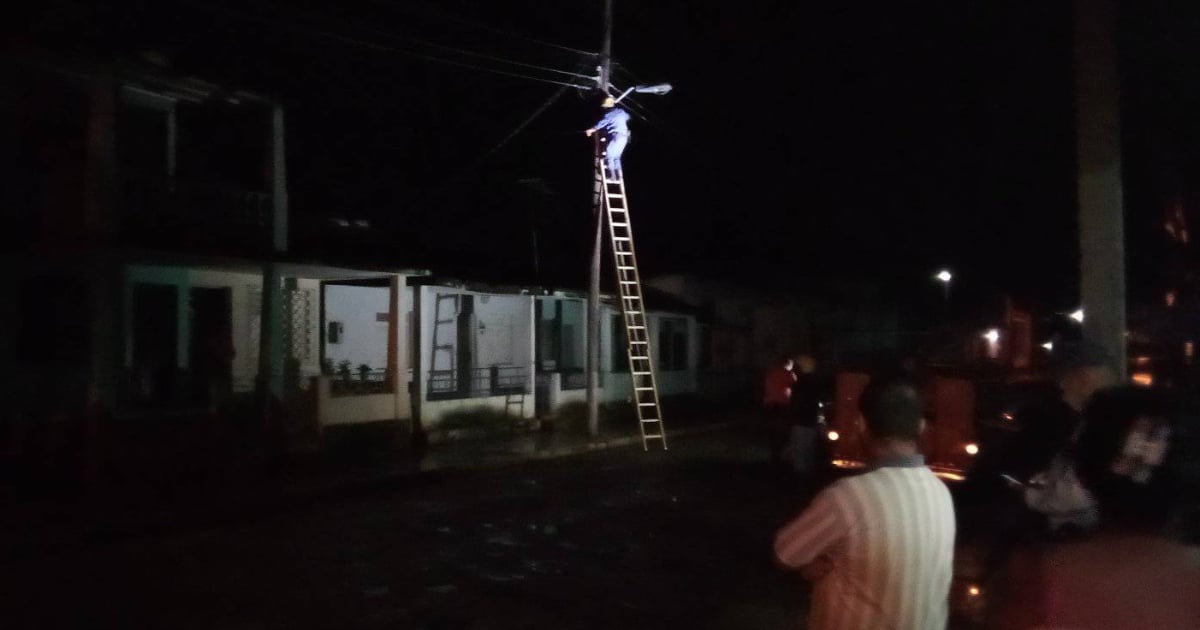Following the complete disconnection of Cuba's National Electroenergetic System (SEN) on October 18, and subsequent similar incidents during recovery efforts, the Cuban Electric Union (UNE) has been reporting generation, demand, and deficit figures that differ from those seen before the collapse of their infrastructure. What is the reason behind the UNE's lower reported outage numbers since they last declared the restoration of the SEN on October 22?
This question was addressed by Lázaro Guerra Hernández, the General Director of Electricity at Cuba's Ministry of Energy and Mines, during an interview on November 11 with the Cuban television show, Buenos Días. The UNE's forecasted low blackout figures post-October 22 are attributed to the fact that the "restoration" of the SEN is not complete but rather partial. As of that Monday, several provinces, including Pinar del Río, Artemisa, Havana, and Mayabeque, remained partially disconnected from the system.
Guerra Hernández pointed out that the deficit, generation capacity, and blackout figures do not account for the provinces affected from Pinar del Río to Havana. Essentially, the UNE's projections pertain to the service provided to provinces ranging from Matanzas to Guantánamo. "The impact is concentrated from the province of Matanzas to the province of Guantánamo. Pinar del Río, Artemisa, Havana, and Mayabeque are not included in this situation. Everything that can currently be served in these provinces is being served," explained the specialist.
On Monday evening, after enduring more than 120 consecutive hours without power, the province of Pinar del Río finally reconnected to the SEN. Although Pinar del Río, the westernmost Cuban province, did not experience major damage from Hurricane Rafael, it was isolated from the electrical system due to the collapse of several high-tension towers in Artemisa, cutting off the region's power supply.
The provincial electric company reported that Pinar del Río had been supported by isolated microsystems, but these systems revealed instability due to overloading, affecting essential services such as hospitals and potable water supplies. Meanwhile, the country's capital, Havana, was nearing 98.36% recovery of its electric service by Monday, with service restored to over 846,000 customers, according to official reports. Havana accounts for roughly a quarter of the nation's electricity consumption.
On Tuesday, Guerra Hernández updated the status of the SEN, noting it was operating stably. "We now have SEN in all provinces of the country. Yesterday, Pinar del Río was reconnected at 9:44 p.m., and by 3:00 a.m., the whole territory had electricity," he stated, according to the government portal Cubadebate. He also mentioned that the maximum impact in the rest of the country, from Matanzas to Guantánamo, reached 1,047 MW at 6:40 p.m. on Monday. "It's important to note that there could still be disruptions in Havana, Artemisa, and Mayabeque," he added for Tuesday, as the UNE announced blackouts of 1,168 MW, figures nearing the "normal" range, due to a generation capacity deficit exceeding 1,100 MW.
With the SEN nearly fully restored across the island, the UNE appears to be projecting outage figures similar to those seen before the system's total collapse. Gradually, the nightmare endured by Cubans during these catastrophic days is returning to "normalcy"—days of partial electric service punctuated by long hours of blackouts, which, after days without any electricity, might seem miraculous to some, a return to a familiar nightmare for others, and yet another "victory" for the regime that allowed the nation's electrical infrastructure to crumble while pouring billions into hotel investments.
